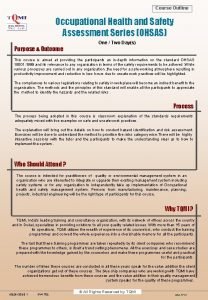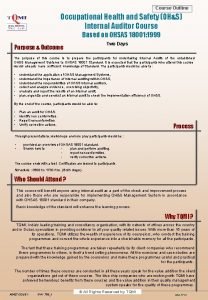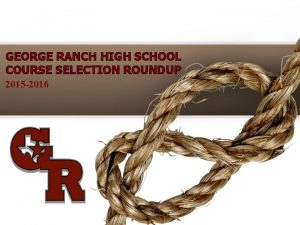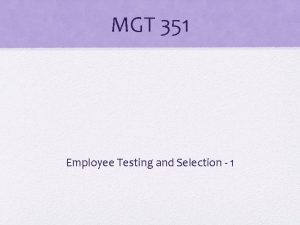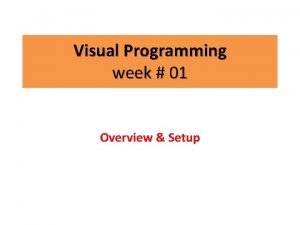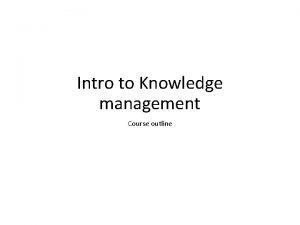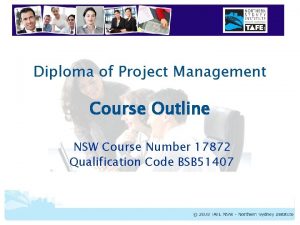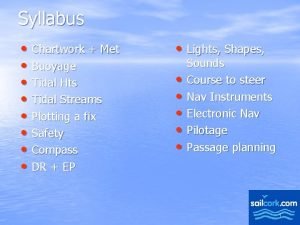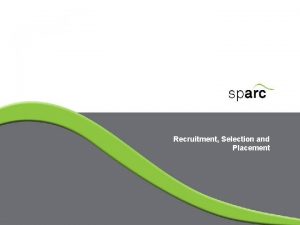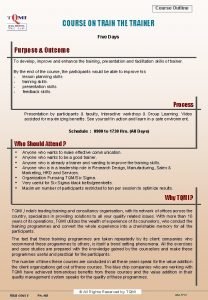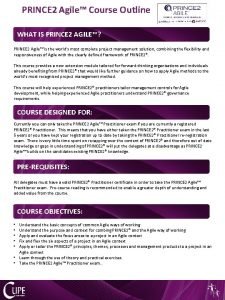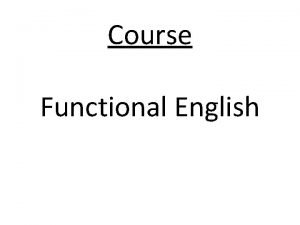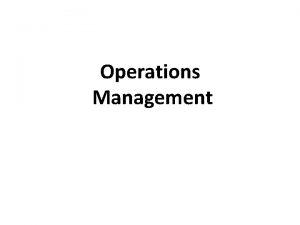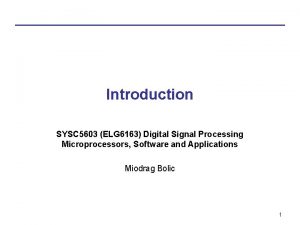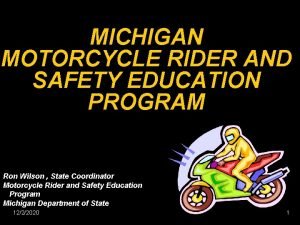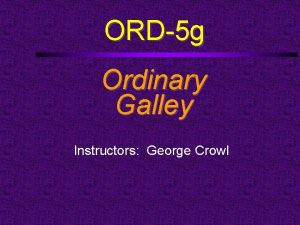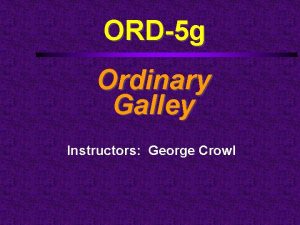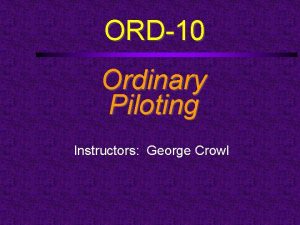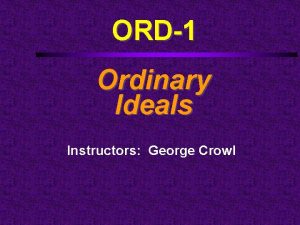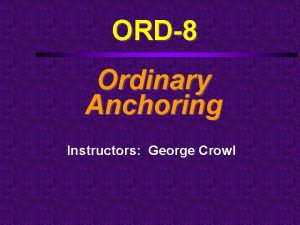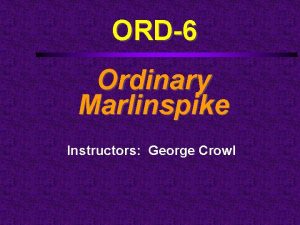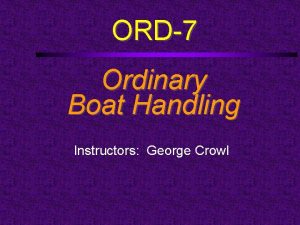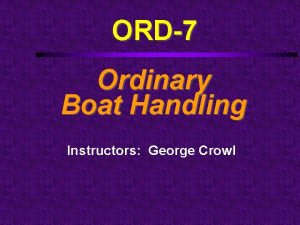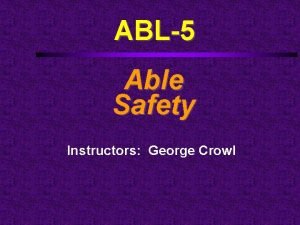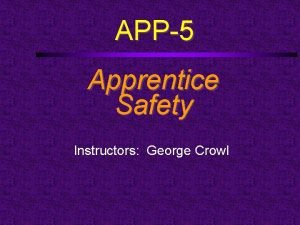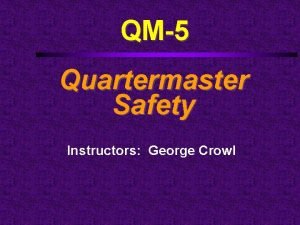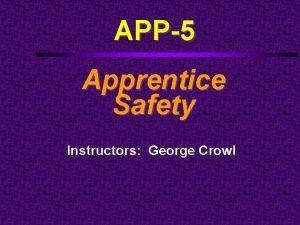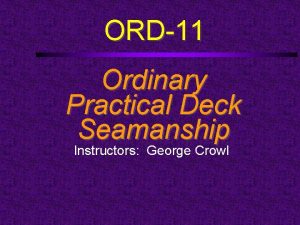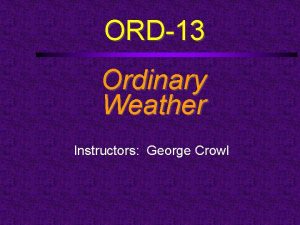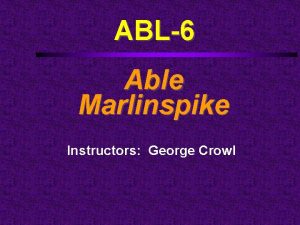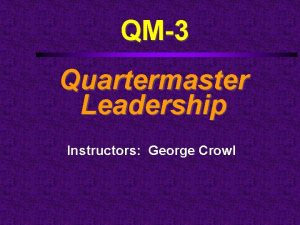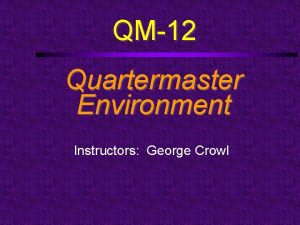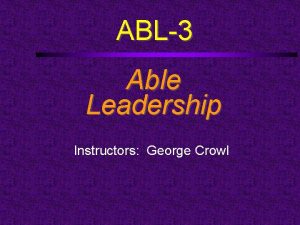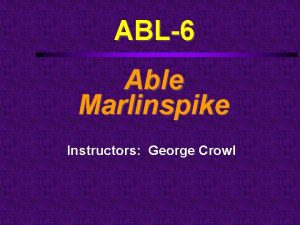ORD5 Ordinary Safety Instructors George Crowl Course Outline






































- Slides: 38

ORD-5 Ordinary Safety Instructors: George Crowl

Course Outline a. Discuss BSA Safety Afloat with an adult leader. b. Describe the safety equipment reqired by law for your ship's primary vessel. c. Develop a ship's station bill for your ship and review it with an adult leader. d. Plan and practice the following skills: man overboard, fire, and abandon ship.

Course Outline e. Describe three types of equipment used in marine communications. f. Demonstrate your knowledge of correct maritime communications procedures by making at least three calls to another vessel, marinas, bridges, or locks.

ORD-5 a Discuss BSA Safety Afloat with an adult leader.

1. Qualified Supervision Mature conscientious adult, 21+ Skilled in craft, qualified in emergencies 1: 10 trained adults One trained in first aid and CPR Any swimming done IAW Safe Swim Defense

2. Personal Health Review Health history, signed by parent Recent injury / health change? Adjust for health conditions Require physician review for unusual conditions

3. Swimming Ability Float trip limited to swimmers Annual swim test: 75 yards any stroke, 25 yards backstroke, float Non-swimmers – calm water, little likelihood of falling overboard, swimmers in same boat

4. Personal Flotation Equipment USCG-approved life jackets must be worn Vessels over 20 ft with cabin excepted if in cabin or cockpit and conditions permit Non-swimmers / beginners must wear life jackets underway Do not have to wear life jackets during proper SSD activity (swimming, snorkeling, etc. )

5. Buddy System Buddy pairs of boats Keep track of each other Be prepared to come in to help Check in and check out of the water

6. Skill Proficiency Knowledge and skill to participate safely Passengers know self-rescue Operators meet govt requirements, maintain control of craft, handle environment changes, keep activities within capabilities Sailing – basic proficiency (tack, jibe, run), return to launch Extended sailing – licensed or bareboat

7. Planning Preparation – regulations, transportation, equipment, supplies. Route, water levels, pull-outs, current charts and information. Float Plan – notifications, before and after Weather – Plan for poor weather, act if weather is bad Contingencies – Possible emergencies, plan changes. Emergency contacts, backups.

8. Equipment Craft – suitable, seaworthy, floatable, meet regs, good repair Life jackets and paddles sized to participants Emergency equipment ready for use Spares appropriate to the activity properly stowed Critical supplies shared stowage Enough vessels to carry on if one sinks

9. Discipline Follow the rules! Discuss before outing, review before boarding Give reasons Be impartial Use good judgement

ORD-5 b Describe the safety equipment required by law for your ship’s primary vessel.

All Boats One life jacket (Type 1, 2, or 3) for every person on board.

Power Boats Under 16' Sail Boats 14'-16' Certificate of number on board State registration numbers displayed One B-1 fire extinguisher (enclosed engine) “Efficient” sound signal (air horn, whistle) Gasoline – approved backfire control device Gasoline – powered ventilation * Navigation lights – sunset to sunrise

Boats Over 16' Throwable life cushion (Type 4) One orange distress flag and one electric distress light OR Three handheld or floating orange distress signals and one electric distress light OR Three combination red flares (handheld, meteor, or parachute)

Boats Over 26' One B-2 or two B-1 fire extinguishers Sound signal – 4 -6 seconds, one-half mile sound Oil pollution placard – near engine or bilge Garbage placard – conspicuous place

Boats 39. 4' or Greater Copy of Navigation Rules (inland only) Large bell *

Other Considerations Engine is often under the helm. May not be able to man the helm with an engine fire Fire extinguishers often at galley near main hatch, and forward cabin near mast. May need to enter through forward hatch to access Radio often mounted aft, may be inaccessible Do not remove engine access hatches until ready to fight fire. Added oxygen may

BSA Requirements Cruising boats – First aid kit, charts, VHF radio Annual Vessel Safety Check Recommended: Anchor, compass, dewatering, boat hook Fuel, spare parts, tools, extra line EPIRB if going offshore Personnel:

ORD-5 c Develop a ship’s station bill for your ship and review it with an adult leader.

Man Overboard OOD/BN – Direct vessel back to MOB. Direct crew in rescue procedures Helm – Execute Williamson turn or other directed maneuvers. Turn engine OFF approaching MOB. Nav/Radio – Plot MOB position, make distress call Lookout – point toward MOB. Don't take eyes off MOB. Advise OOD & Helm Deck crew – throw life preservers, MOB markers. Prepare to dowse sails. Prepare to retrieve MOB

Fire OOD/BN - Direct crew fighting fire. Consider engine shutdown. Dowse sails ASAP. Helm - Maintain control. Position vessel so fire is on lee side. Consider engine shutdown. Nav/Radio - Mark/ plot position. Make distress call. Lookout - Advise OOD and helm of closest land or vessel help. Deck Crew - Retrieve all fire extinguishers. Fight fire. Shut off fuel supply. Report status. Prepare to dowse sails.

Collision OOD/BN - Direct helm to avoid collision, crew to brace for collision. Helm - Turn and use motor to avoid collision or minimize damage. Brace. Nav/Radio - Mark/ plot position. Brace. Make distress call at OOD direction. Lookout - Move to safer position. Brace. Advise helm. Deck crew - Brace. Follow OOD direction.

Damage Control OOD/BN - Direct crew in damage control Helm - Position vessel to minimize further damage and water inflow. Nav/Radio - Mark/ plot position. Make distress call at OOD direction. Lookout - Advise of vessel condition. Advise of other dangers. Deck crew - Follow OOD direction. Put plugs in holes. Fother sail over major damage if possible.

Abandon Ship OOD/BN - Direct crew to gather abandon ship bag / equipment. Don life jacket. Launch life rafts, etc. Helm - Position vessel to provide shelter to crew while abandoning. Don life jacket. Nav/Radio - Mark / plot position. Don life jacket. Make distress call. Gather abandon ship bag equipment & supplies. Take portable radio. Lookout - Account for all crew. See deck crew duties. Deck Crew - Don life jacket. Tether and launch life rafts, etc. Load spare life jackets. All crew link up.

Abandon Ship Bag Use a waterproof bag, or even a sail bag Water EPIRB/Radio Flares Horn/Pump Bell Mirror Flashlight/lights Orange flag GPS FA kit Spare line Hats Sunscreen Knife Nav kit Jackets Food Ice Chest Compass Charts Fishing gear

APP-5 e Describe three types of equipment used in marine communications.

Very High Frequency (VHF) VHF radios – mast mounted, handheld Line of sight – mast mounted has greater range No license required – anyone can talk, but there are rules Channel 16 – Calling. Distress. Channels 68, 69, 71, 72, 78 – recreational boaters For lake and near-shore vessels

High Frequency (HF) HF radio – ship mounted Large, expensive Requires operator (not ham) license, ship license Range – to 10, 000 miles, but inconsistent For oceangoing vessels

Citizen's Band (CB) CB primary use is truckers, etc. CB equipment is less expensive USCG does not monitor CB Getting a distress call through – does not have a standard distress frequency Not recommended

Radiotelephone Procedure “Defiant, this is Envie, over” “Envie, Defiant, over” “Defiant, go six eight, over” “Envie, six eight, out” “Defiant, Envie six eight, over” “Envie, Defiant, go ahead” “conversation. . , over”

Prowords Over – your turn to talk Out – I have finished talking “Over and out” – bad form Roger – I understand or acknowledge Wilco – I will comply Say again – repeat your transmission I spell – in phonetic alphabet

Emergencies Review Mayday – life threatening situation Pan – safety of vessel or property Securité – safety message

Phonetic Alphabet Alpha Victor Bravo Whiskey Charlie Ray Delta Yankee Echo Hotel Oscar India Papa Juliet Quebec Kilo Romeo Lima Sierra X-

Practice Two way communications – one person is one boat, second person is second boat Practice an emergency call – one person has the emergency, second person is USCG Do it – using VHF (or CB) and other Sea Scout boats or other boaters Do not do radio checks on Channel 16, available on Sea Tow channels (Google, give location, get channel)

Questions?
 Ord5
Ord5 Occupational health and safety assessment series
Occupational health and safety assessment series Occupational health and safety course outline
Occupational health and safety course outline The cone of experience by edgar dale
The cone of experience by edgar dale George washington x king george iii
George washington x king george iii John adams vs thomas jefferson venn diagram
John adams vs thomas jefferson venn diagram Greg tielke
Greg tielke How to make a sandwich paragraph
How to make a sandwich paragraph Social psychology outline
Social psychology outline Mgt 351 nsu course outline
Mgt 351 nsu course outline Geo 702 ryerson
Geo 702 ryerson Ai2.appinventor.mit.edu emulator
Ai2.appinventor.mit.edu emulator Parallel and distributed computing syllabus
Parallel and distributed computing syllabus Java course outline
Java course outline Knowledge management course outline
Knowledge management course outline Bsb51407
Bsb51407 Product-oriented syllabus
Product-oriented syllabus Mba finance course outline
Mba finance course outline Phys1111 unsw course outline
Phys1111 unsw course outline Sysc 2004 course outline
Sysc 2004 course outline Hts course outline
Hts course outline Recruitment selection and placement
Recruitment selection and placement Econometrics
Econometrics Train the trainer outline
Train the trainer outline Agile course outline
Agile course outline Functional english course outline
Functional english course outline Outline of american literature
Outline of american literature Analytical thinking training course outline
Analytical thinking training course outline Rhcsa course syllabus
Rhcsa course syllabus Molecular biology course outline
Molecular biology course outline Software engineering 1 course outline
Software engineering 1 course outline Key concepts in operations management
Key concepts in operations management Sysc
Sysc Disadvantages of cavity wall
Disadvantages of cavity wall Course number and title
Course number and title Chaine parallèle muscle
Chaine parallèle muscle Tractor safety course oregon
Tractor safety course oregon Hse culture ladder
Hse culture ladder Basic rider course michigan
Basic rider course michigan

